Aaliya Mir, who lives in Srinagar, Jammu & Kashmir, was busy when we called — her phone giving an engaged signal. But we keep trying.
The 42-year-old former Maths teacher is famous on the internet for climbing sketchy ladders in Kashmiri homes to save snakes while wearing sports shoes, salwar kameez and a hijab. There are also pictures of her hand-feeding bears in wildlife enclosures and rescuing leopards in the valley. As you can probably imagine, this was someone we wanted to speak to very keenly.
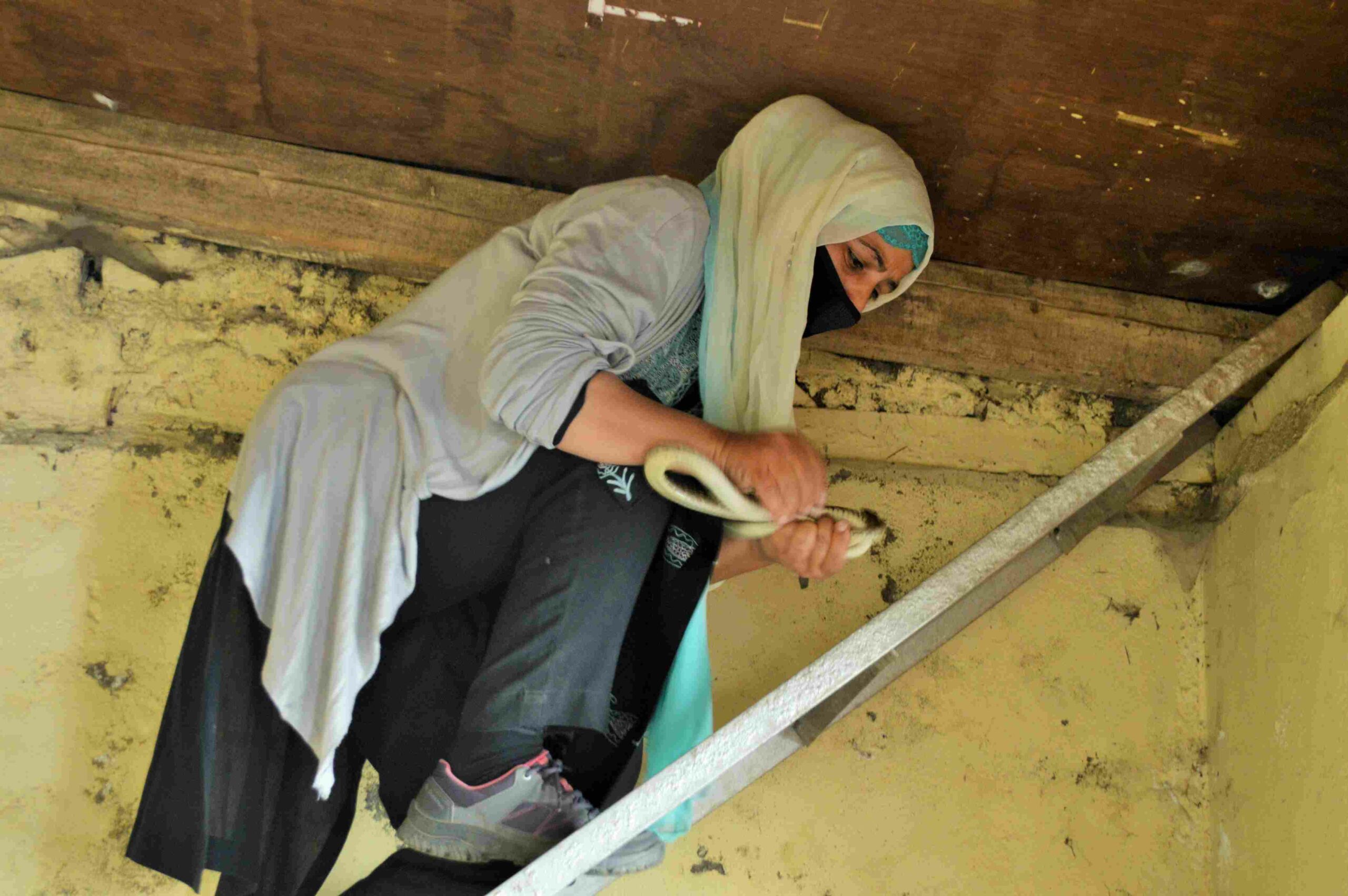
An hour later, she gets in touch to let us know she is amidst yet another rescue operation. “Another leopard was spotted in the CCTV footage of the Budgam village. We have been there since morning. It is not easy to rescue the animal on the same day. We have been trying to rescue this leopard since last week,” says Aaliya.
Of course, a wild cat will not come when called. So, in the meantime, Aaliya and her team at Wildlife SOS, a non-profit organisation for rehabilitating the wild, conduct awareness sessions with the locals.
Asked the dos and don’ts when spotting a wild animal, and she has a long list to give.
“If a leopard is spotted in the area, pets should be kept inside the house. Children and the elderly should not venture out from dusk to dawn. People should avoid going alone or taking shortcuts through the villages/jungles where there is no traffic or human activities,” cautions the wildlife rescuer.
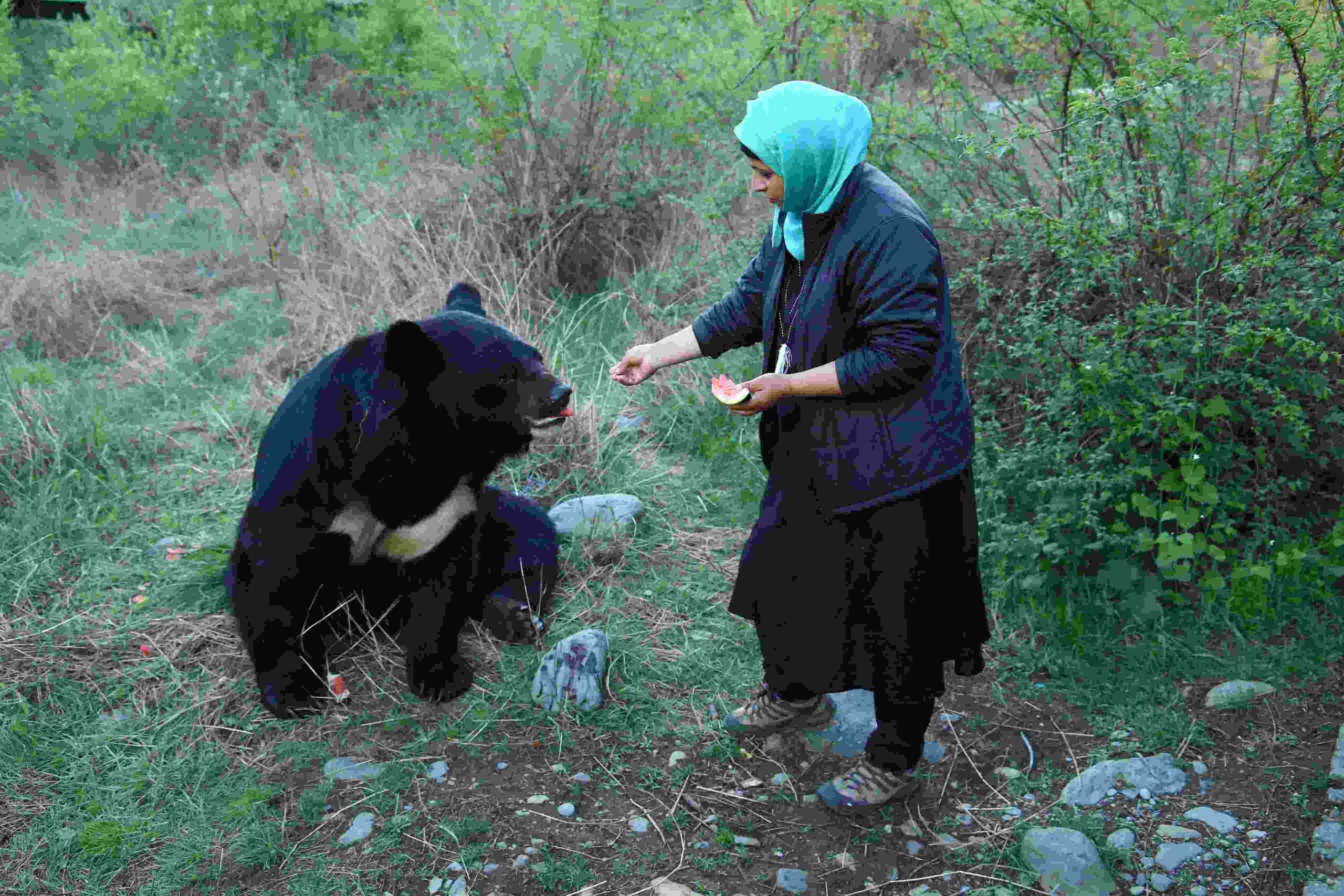
When it comes to bears, in addition to not taking the shortest route home, the people of the valley are advised to keep their dustbins inside their home. “They’re omnivorous. If there is something edible in your garbage, they will be attracted to human settlements,” she says, adding, “People are advised to keep their surroundings clean so that these animals don’t get a chance to take refuge in piled up garbage, pieces of wood or heaps of leaves.”
People of the valley are also advised to cement their poultry pens and chicken coops. “Ones made of mud will easily be accessed by the wild animal. Livestock should also wear bells around their necks, which acts as an alarm system,” she says.
All this knowledge has come from the experience of being a wildlife rescuer for a decade and a half. “Over the years, I’ve also researched quite a bit about animal behaviour, taken courses on animal rescue and wildlife rehabilitation,” she says.
And rightly so.
In the past three years, she and her team have rescued 2 leopards, 2 turtles, 3 bears, 6 monkeys, 16 raptors and 88 reptiles.
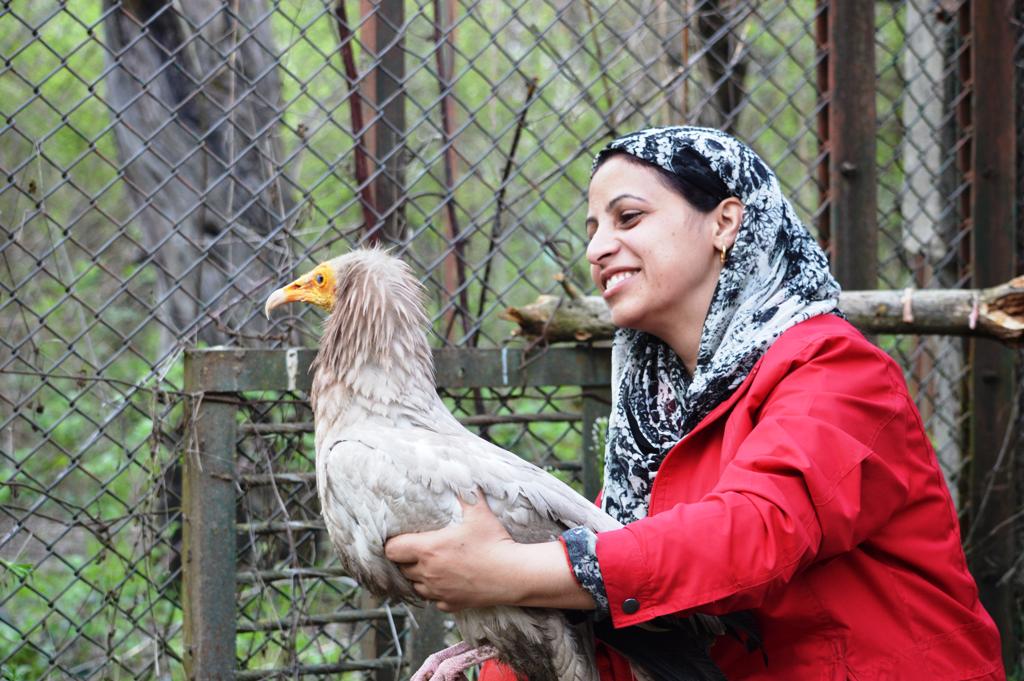
Aaliya has also spent weeks conducting censuses of the wild in Kashmir, such as the Asian water-bird census and the Red Deer census. She also conducts workshops with law enforcement agencies and the local forest departments.
But the former Maths teacher had no idea she would end up rescuing the animals herself.
Furry rescue missions
“In our society, we always think of girls becoming teachers, and that’s what I had aspired to become,” says Aaliya, adding, “I was still in my second year degree college in Delhi in 2002 when I got married. The next year I graduated with my Bachelors in Science and began pursuing my Masters in Maths, while also simultaneously studying for my Bachelors in Education.”
While she was studying hard to become a Maths teacher, life had other plans. She says, “My husband is a veterinarian. When we got married, I got to experience this wonderful world of animals. That’s when I started volunteering for Wildlife SOS in 2002.”
Wildlife SOS began its operations in 1995 and had its presence in Delhi—where Aaliya lived at the time—among other cities.
But what took her to Kashmir was a rather tragic affair.
“In 2007, there was an incident where a bear was stoned in one of the villages in Kashmir. This was very tragic and motivated us to start a project to mitigate the human-animal conflict in Jammu & Kashmir. This was at a time when human-animal conflicts were on the rise,” she recalls, adding that’s when she was made project manager and asked to head operations in J&K.
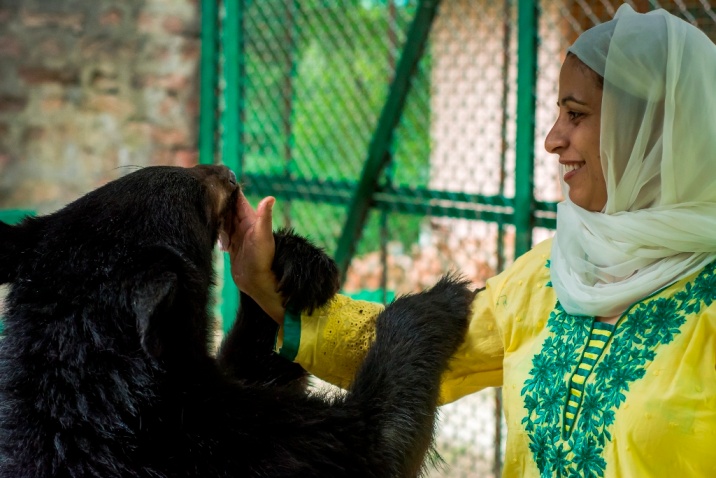
Today, Wildlife SOS is taking care of six black bears and two brown bears at two of their centres at Dachigam and Pahalgam under the guidance of Aaliya. The bears, among other animals at the reserve, have been rescued from human-wildlife conflict situations. “Sometimes, the mothers of these bears are killed or driven away during these conflicts. If we hadn’t taken them in, the cubs would’ve been eaten up by wild dogs or wolves,” says Aaliya.
Reminiscing about her most challenging rescue, she says, “Last year, a mother bear and her two six-month-old cubs had entered an abandoned house in Pulwama. When with her offspring, mother bears can be very ferocious. That rescue was very challenging because we had to keep them united. We shot the mother with a tranquiliser, but she still managed to run away. We didn’t tranquilise the cubs and rescued them anyway.”
It was dark before the mother bear showed up again. The team had kept the cubs in a two-cage enclosure that closes upon entering. They eventually managed to reunite the bear family and set them free in the wild.
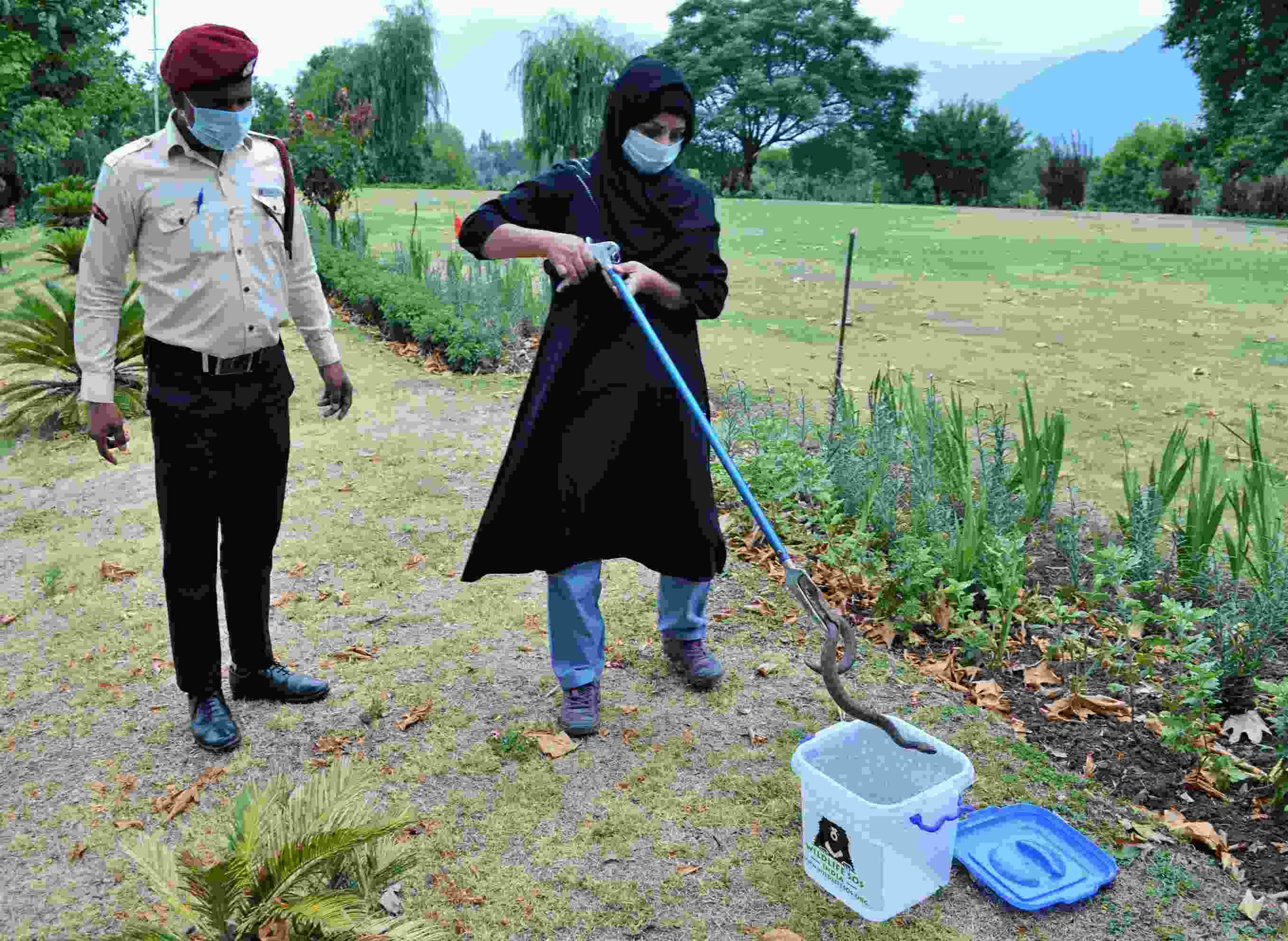
Having volunteered with Wildlife SOS since 2002, Aaliya keeps a record of the kinds of rescue missions she has conducted over the years. But this, she says, is not her biggest feat.
Preaching wildlife awareness in the valley
“People used to swarm the areas where wildlife is spotted in hundreds with lathis (sticks) and kulhadis (axes). They’d drive the animal away by stoning or hitting them,” she says, emphasising that “controlling the mob” has been one of their biggest achievements.
These awareness sessions, she says, are important as they run parallel to the rescues. “We started with education and awareness, capacity building and rescue and rehabilitation of the wild,” she says, adding, “We even reach out to tribesmen in the forests for awareness sessions.”
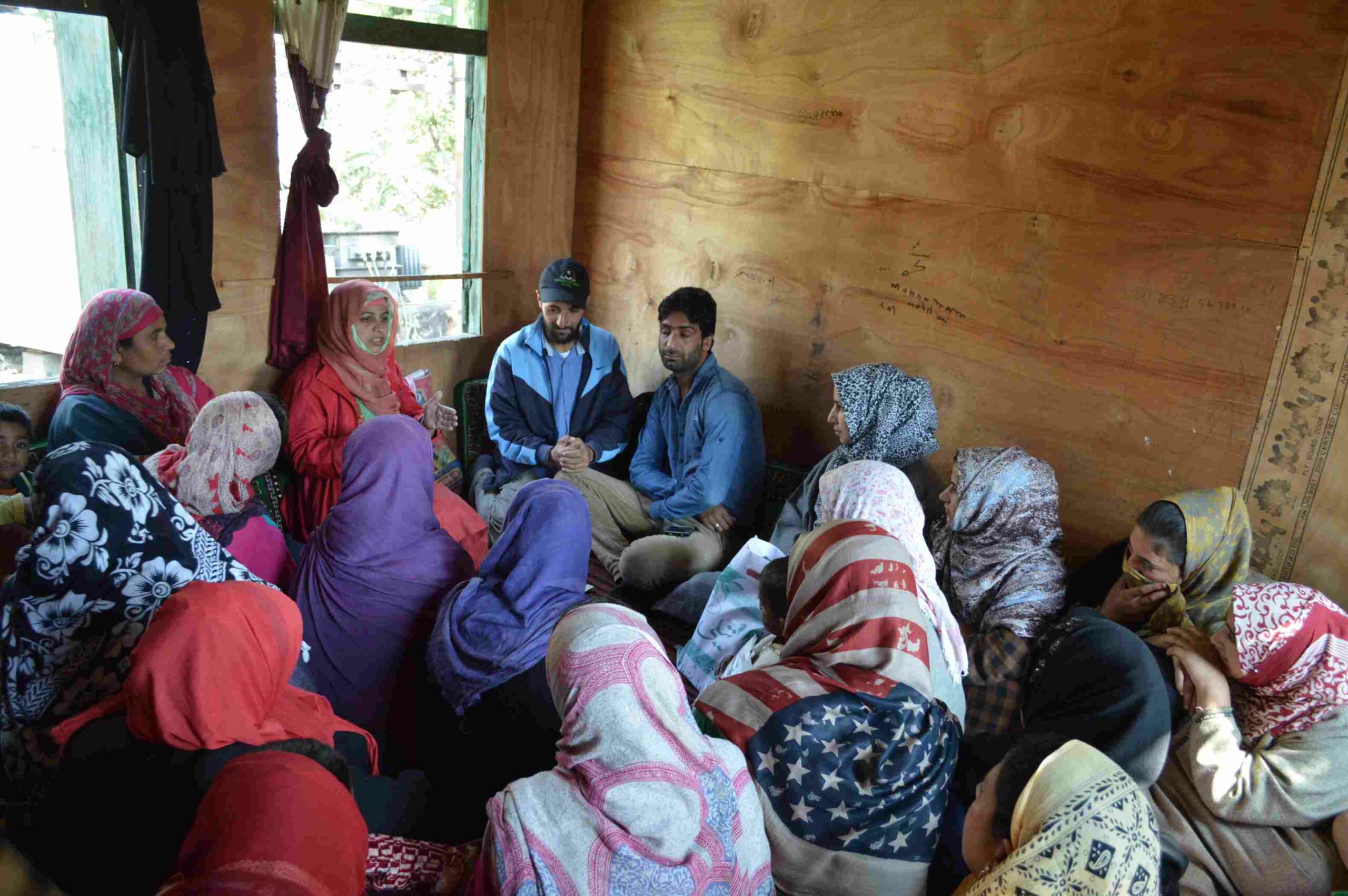
For instance, not many know there is a compensation policy wherein victims of human-animal conflicts can claim money from the wildlife department for their injuries. “We try to bridge the gap between people, the wildlife department and the government,” she says.
Official statistics cited in a Mongabay-India article state that in just eight years from 2012 to 2020, 44 leopards and 124 black bears have died because of retaliation or natural causes. “In the past 14 years (from 2006 to 2020), as many as 242 people have died, and 3,528 were injured in human-wildlife conflict in Kashmir,” the article notes.
But ignorance is still rampant in the valley. Detailing one such incident, Aaliya says, “During one of the awareness campaigns at a degree college here, a professor accused me of not ‘doing my job’. She said, ‘What are you guys doing? A tiger has come to Lal Chowk!’ She wasn’t aware that we have no tigers in Kashmir, just leopards. This was the limit of ignorance. We have had to educate even the so-called educated here about wildlife.”
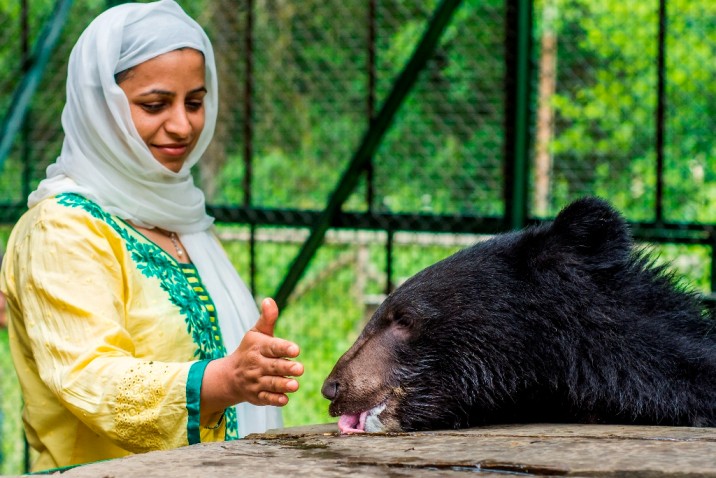
And no one is prouder of her work than Aaliya’s ever-supportive husband, Dr Shabir Ahmed, who feels great that he could inspire her to change her vocation. “Aaliya is doing a great job when it comes to wildlife conservation. She’s rescuing animals by conducting workshops and community awareness sessions as well. Sometimes it can be terrifying when she handles wild animals, especially when it comes to bears, leopards and snakes. But I know that she is experienced and she can handle all of this very well. I feel very proud of her work and passion towards animals,” he says.
But at this point, Aaliya is devoid of fear. She enjoys observing the animal kingdom, taking care of vultures, orphaned bear cubs and owls, and even carrying out the most nerve-wracking rescues.
“This Earth doesn’t just belong to humans but animals as well, and we have to learn to live with them,” she signs off.
(Edited by Vinayak Hegde)
No comments:
Post a Comment